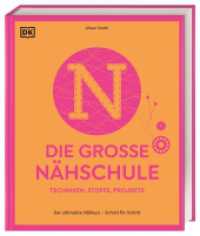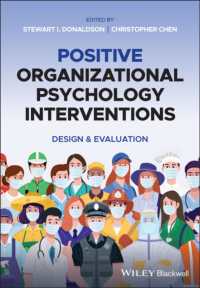Full Description
Power Tools: 30 Critical Disciplinary Literacy Strategies for 6-12 Classroom is a unique textbook that offers readers an assortment of short, easy-to-implement disciplinary literacy strategies (which guide virtually all national standards) from critical literacy lenses. Recently emerging scholarship around critical disciplinary literacy (CDL) suggests that disciplinary literacy is, by itself, an incomplete and potentially problematic approach to secondary (grades 6-12) literacy instruction.
A more equitable approach—one that understands disciplines as unique communities with their own unique (and often exclusionary) skills, norms, and discourses (Moje, 2015)—would be more responsive to the ways in which power works differently based on the disciplines at hand (Dyches, 2018/2022). For example, examining systems of power and oppression involved in vaccine distributions requires a different skill set and strategy approach than looking at representations of masculinity in Romeo and Juliet. Power Tools provides multidisciplinary ideas for how to implement CDL in secondary classrooms. Moreover, given the current and ongoing attacks on justice-centered teaching, this text will also serve a critical need: showing teachers how they can teach to name and disrupt oppression in ways that are also standards/discipline-based.
The book offers 30 strategies, with 1-2 pages for each strategy. As an organizing feature in the beginning of the text, there is a vertical list of strategies in alphabetical order, with horizontal columns to the right: one for Critical Literacy Skill and another for Disciplinary Literacy Skill. This feature allows readers to quickly discern which tasks most immediately meet their instructional goals. Each brief chapter will follow the following format:
·A brief overview of each strategy, situated in research of best practices and critique;
·Two to three disciplinary examples for each CDL strategy (i.e. an example of a critical disciplinary literacy-oriented think aloud in seventh grade math and tenth grade ELA classroom). Strategy examples may include examples of student work, discussion prompts, dialogue between teacher and students, and reprintables;
·Ideas for addressing push back. This piece will be especially powerful for teachers concerned about fallout from opening up CDL oriented conversations.
Power Tools is the perfect text for courses such as Disciplinary Literacy, Secondary Literacy, Content Area Literacy, Methods/Strategies for Teaching Social Justice, Multicultural Education, ELA methods, Science methods, Social Studies methods, and Math methods. It is a valuable tool for both preservice and in-service teachers.






